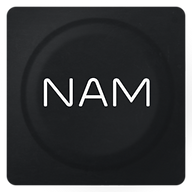KingsXJJ
Shredder
- Messages
- 1,740
If any one here knows about manufacturing and component costs, I’d be interested in their analysis (or educated guess) on what it might take/cost for a company like Hotone, Nux, Mooer, etc… to build and ship a NAM player. Something built along the same hardware quality as their current products.
I think it might be a golden opportunity for them and the platform if something is possible and compelling.
I think it might be a golden opportunity for them and the platform if something is possible and compelling.


